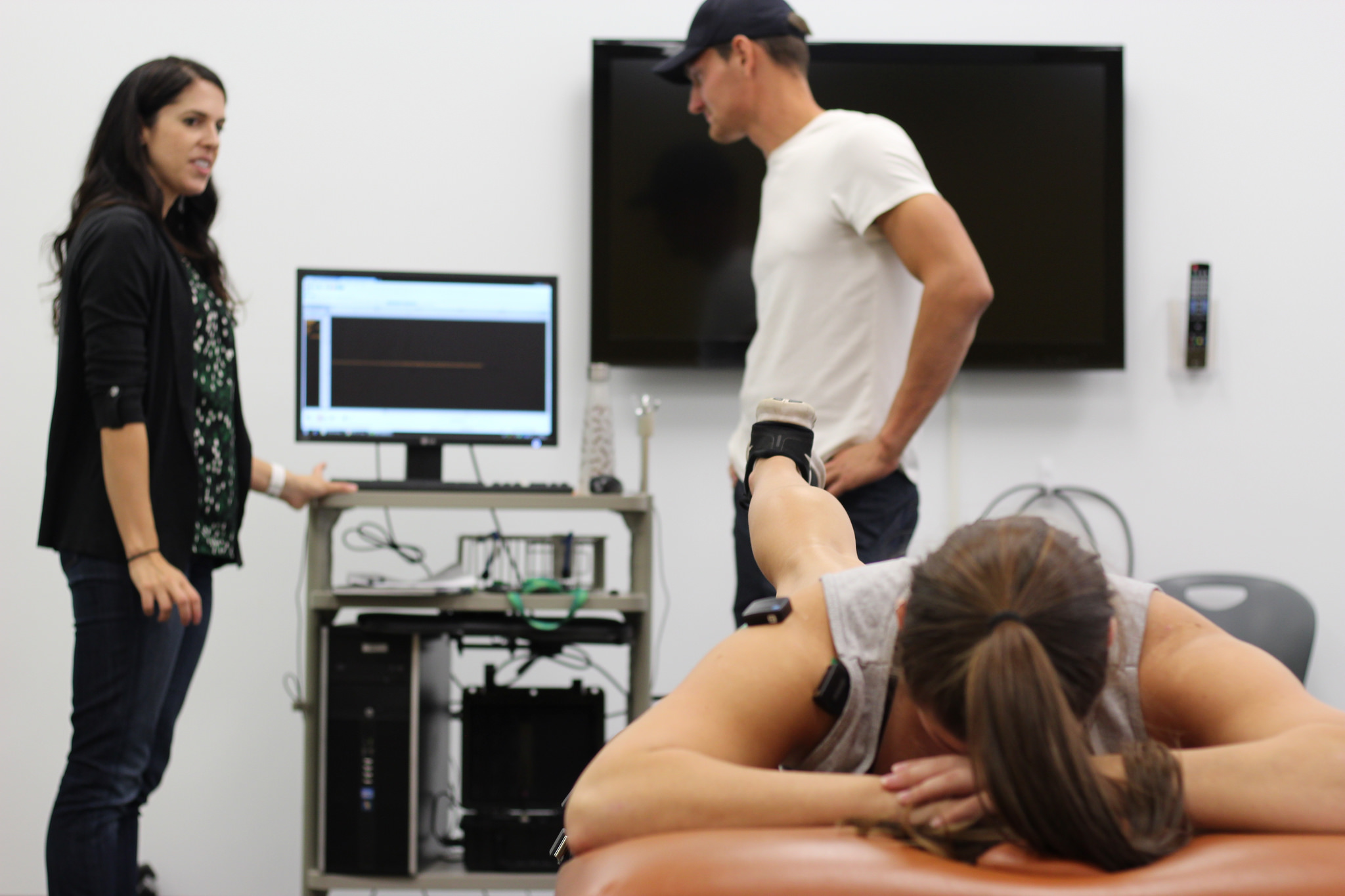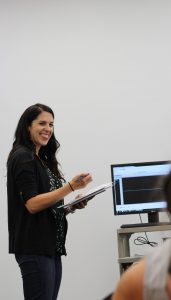
Being physically fit is an essential component to becoming a law enforcement officer and staying successful on the job. An officer who is healthy and strong is not only more effective in problem solving scenarios that require movement or stamina, it also decreases their risk of injury.
All law enforcement candidates are required to perform a standardized Physical Abilities Test that imitates the demands of police work through a series of obstacle courses and push-pull activities.
Dr. Gillian Hatfield, an assistant professor in the kinesiology department at UFV, has been asked by LEPAT, North America’s leading company in law enforcement physical abilities testing, to evaluate muscle activation during the push-pull simulation of the standardized Physical Abilities Test.
Hatfield has a long history with muscle activity research and interventions to help people enhance the use of their muscles, particularly in areas of knee osteoarthritis and older populations. A physiotherapist by trade, Hatfield brings a unique applied approach to her research.
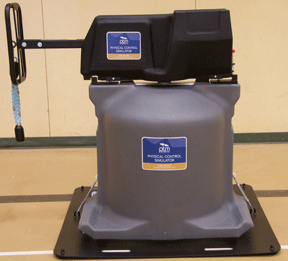
“The strength test performed by law enforcement candidates is interesting because it is meant to mimic the physical demands that someone would exert on the job by pushing and pulling 80 pounds while moving in 180 degree rotations,” says Hatfield.
Her research utilizes a physical control simulator, equipment developed by LEPAT that represents pushing and pulling forces, in aim to increase the success rate of law enforcement candidates by revealing areas of the body people can train more effectively in preparation for the test.
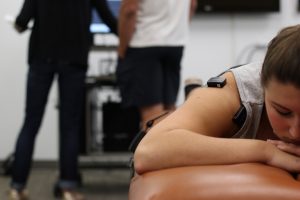 Hatfield and her student research assistants are collecting their data through a electromyography system (EMG). The EMG system uses wireless sensors to measure muscle activity while people are preforming the push-pull simulation.
Hatfield and her student research assistants are collecting their data through a electromyography system (EMG). The EMG system uses wireless sensors to measure muscle activity while people are preforming the push-pull simulation.
“The EMG equipment allows us to be more flexible in our research because the participants can literally move around while they are doing the test,” explains Hatfield. “The sensors from the EMG system are attached to the participant in areas where we want to assess muscle activity during the movements.”
Students are getting involved in the research process at the initial stage. They are learning how to standardize the process of gathering data, down to the hands-on work of preparing the skin for the sensors.
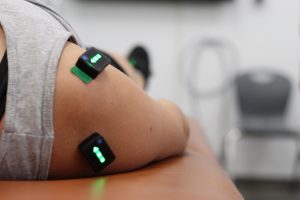
“The concepts my research assistants are learning, and the skills students in my biomechanics class will also learn, are transferable across all kinesiology-related fields,” notes Hatfield. “Students are seeing the applied side of muscle activity by understanding activation during different exercises. It goes beyond just talking about abstract concepts; they are seeing it in real time.”
She also anticipates her research findings will offer relief for current law enforcement officers who might be in rehabilitation due to injury.
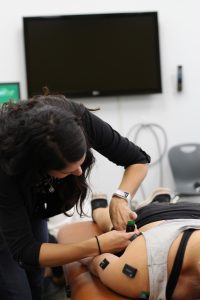 Dr. Gillian Hatfield is a new and emerging researcher at UFV. From the Maritimes, Hatfield completed a Bachelor of Science in Biology at Mt. Allison University. She holds a Bachelor of Physiotherapy and a Master of Science (Rehabilitation Research) from Dalhousie University. After practicing as a physiotherapist for two years, she moved on to complete a Doctorate in Biomedical Engineering at Dalhousie University and a Post-doctoral fellowship at the University of British Columbia.
Dr. Gillian Hatfield is a new and emerging researcher at UFV. From the Maritimes, Hatfield completed a Bachelor of Science in Biology at Mt. Allison University. She holds a Bachelor of Physiotherapy and a Master of Science (Rehabilitation Research) from Dalhousie University. After practicing as a physiotherapist for two years, she moved on to complete a Doctorate in Biomedical Engineering at Dalhousie University and a Post-doctoral fellowship at the University of British Columbia.
Hatfield will publish her findings in a report to LEPAT, as well as in a scientific journal aimed at strength and conditioning, and plans to continue to use the equipment in teaching and further research at UFV.
Interested in seeing how your muscles work? Participate in Dr. Hatfield’s research:
- Participants must be 19 years or older;
- Have no current lower back pain;
- Have no cardiovascular conditions that would be high risk during exercise;
- Required to push and pull an 80 lb weight while muscle activity of upper and lower body muscles is measured.
Contact Gillian.Hatfield@ufv.ca

